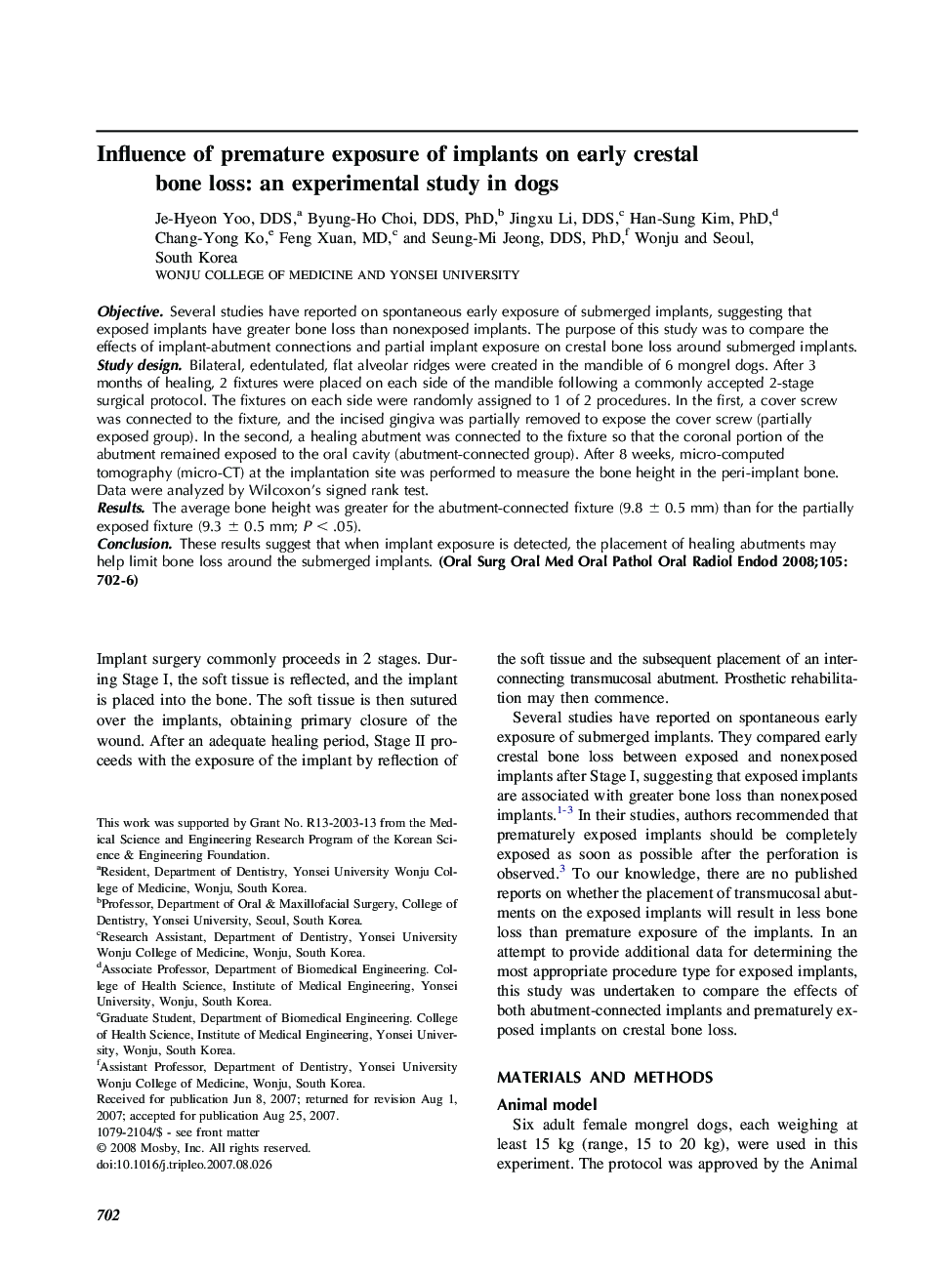| Article ID | Journal | Published Year | Pages | File Type |
|---|---|---|---|---|
| 3168657 | Oral Surgery, Oral Medicine, Oral Pathology, Oral Radiology, and Endodontology | 2008 | 5 Pages |
ObjectiveSeveral studies have reported on spontaneous early exposure of submerged implants, suggesting that exposed implants have greater bone loss than nonexposed implants. The purpose of this study was to compare the effects of implant-abutment connections and partial implant exposure on crestal bone loss around submerged implants.Study designBilateral, edentulated, flat alveolar ridges were created in the mandible of 6 mongrel dogs. After 3 months of healing, 2 fixtures were placed on each side of the mandible following a commonly accepted 2-stage surgical protocol. The fixtures on each side were randomly assigned to 1 of 2 procedures. In the first, a cover screw was connected to the fixture, and the incised gingiva was partially removed to expose the cover screw (partially exposed group). In the second, a healing abutment was connected to the fixture so that the coronal portion of the abutment remained exposed to the oral cavity (abutment-connected group). After 8 weeks, micro-computed tomography (micro-CT) at the implantation site was performed to measure the bone height in the peri-implant bone. Data were analyzed by Wilcoxon's signed rank test.ResultsThe average bone height was greater for the abutment-connected fixture (9.8 ± 0.5 mm) than for the partially exposed fixture (9.3 ± 0.5 mm; P < .05).ConclusionThese results suggest that when implant exposure is detected, the placement of healing abutments may help limit bone loss around the submerged implants.
